Jean Alaux
Paintings
Under the Arbour
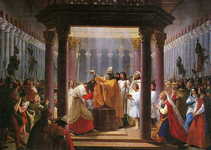
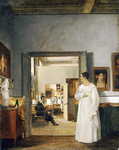
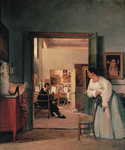
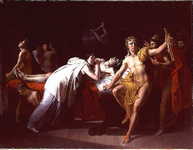
Briseis weeping Patroclus under the tent of Achilles

François de Bassompierre (1579-1646)
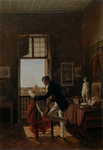
L'Atelier de Picot à la Villa Médicis
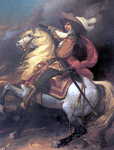

Pandora carried off by Mercury

Philip V. and Louis Joseph, Duke of Vendôme

Claude-Louis-Hector, duc de Villars at the Battle of Denain
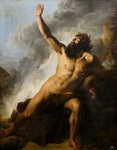
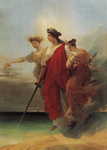
Justice bringing Abundance and Industry on Earth
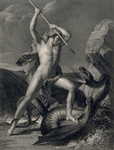

Theseus fighting the centaur Chiron
Fine Art Prints | Greeting Cards | Phone Cases | Lifestyle | Face Masks | Men's , Women' Apparel | Home Decor | jigsaw puzzles | Notebooks | Tapestries | ...
Jean Alaux, called "le Romain" ("the Roman"), (1785 – 2 March 1864) was a French history painter and Director of the French Academy in Rome from 1846-52. Alaux was born in Bordeaux, the son of a painter, and the second of four brothers who were all themselves painters. he received his first lessons in art from his father, but went on to formal training with Pierre Lacour, then Pierre-Narcisse Guérin. He was admitted to the École des Beaux-Arts in Paris in 1807. From 1808 he entered works for the Prix de Rome but his energies were diverted when his elder brother, Jean-Francois Alaux (1783–1858), asked him to help with a large "neorama" (a type of Panorama) he was working on. Jean eventually won the Prix de Rome's first prize in 1815, with a work entitled "Briseis weeping over the body of Patroclus", a scene inspired by The Iliad of Homer. He subsequently became a pensionnaire at the French Academy in Rome from 1816 to 1820 (later becoming its director).
Among his fellow artists at the Academy were such luminaries as Drolling, Picot, and Gogniet, and sculptors such as Angers, Pradier, and Ramey; he became a friend of Ingres. His first painting at the Academy was "Cadmus killing the dragon at the fountains of Dirce", which was later purchased by the Duke of Orleans but was destroyed in the fire which engulfed the Palais-Royal in the French Revolution of 1848. Alaux also painted at the Academy "Diamedes carrying off the palladium" and "Episodes in the combats between the centaurs and the Lapithes". In 1821, he returned to France, where his reputation steadily grew with works such as "The Baptism of Clovis" (1825), "States General of 1838", "The Assembly of the notables at Rouen in 1596", and "States General 1614".[1] Under the July Monarchy, he worked at the "Galerie des batailles" of the Château de Versailles, for which he painted "The Battle of Villaviciosa" (1836); "The Capture of Valenciennes" (1837); and "The Battle of Denain" (1839).
Alaux was appointed as director of the French Academy in Rome in 1846 and was caught up in the siege of Rome of 1849, involving defending Italian forces under Garibaldi and the invading French army; he and his students were forced to temporarily flee the city for France. His directorship ended quietly with his retirement in 1852.[1]
Alaux died in Paris on 2 March 1864.[1]
References
A director of the French Academy in Rome (The Chautauquan: Organ of the Chautauqua Literary and Scientific Circle, 1891) pp. 352-5.
----
Fine Art Prints | Greeting Cards | Phone Cases | Lifestyle | Face Masks | Men's , Women' Apparel | Home Decor | jigsaw puzzles | Notebooks | Tapestries | ...
----
Artist
A - B - C - D - E - F - G - H - I - J - K - L - M -
N - O - P - Q - R - S - T - U - V - W - X - Y - Z
Retrieved from "http://en.wikipedia.org/"
All text is available under the terms of the GNU Free Documentation License




